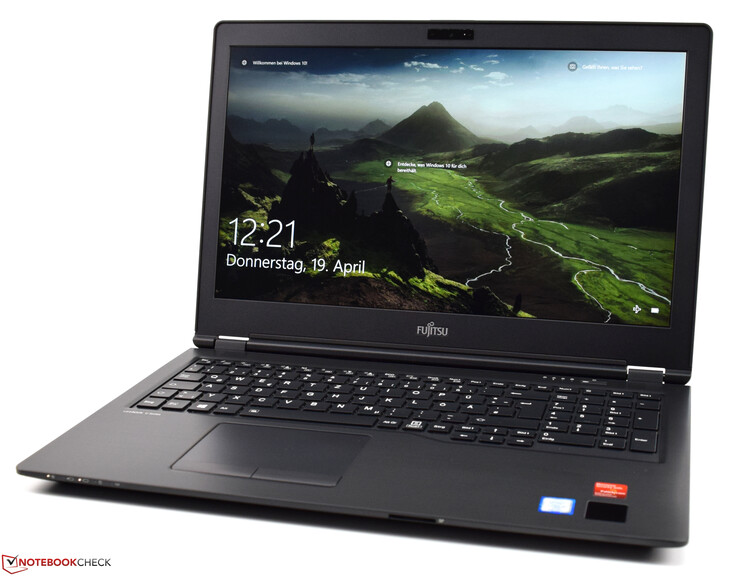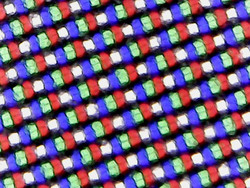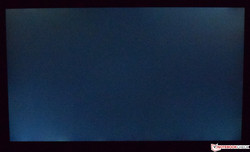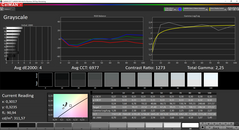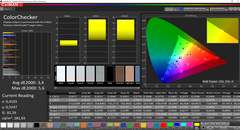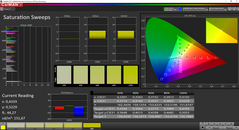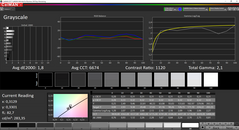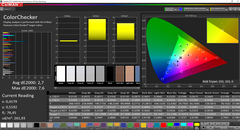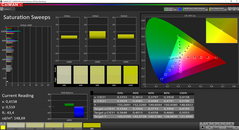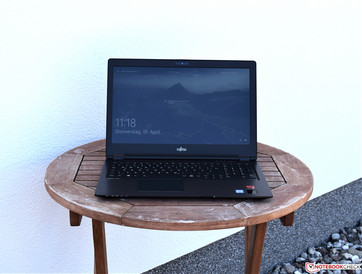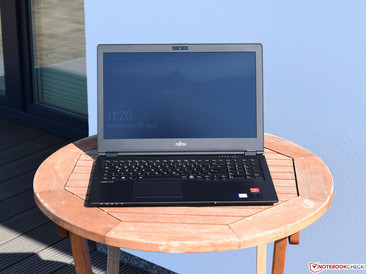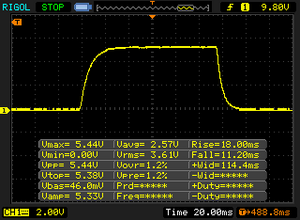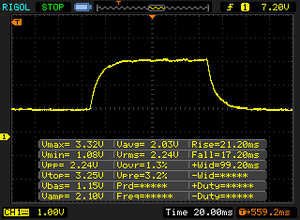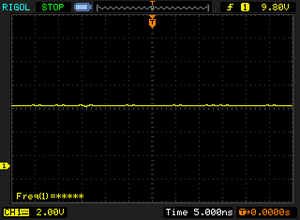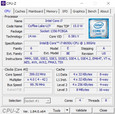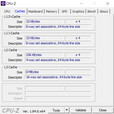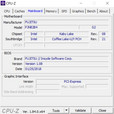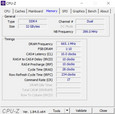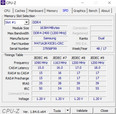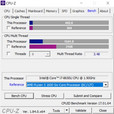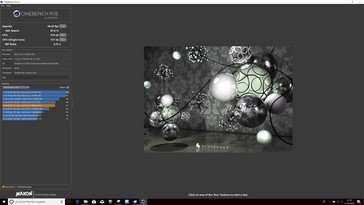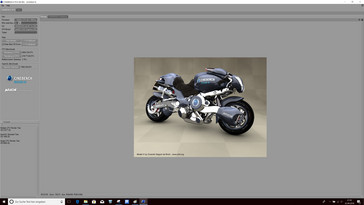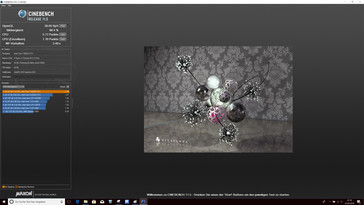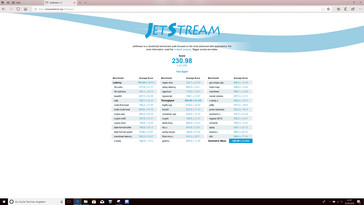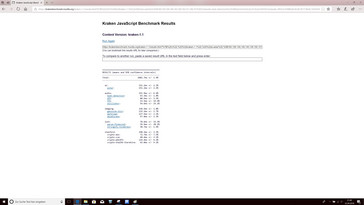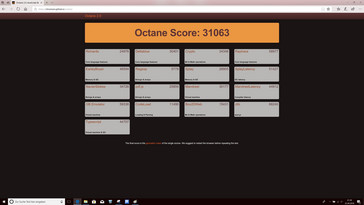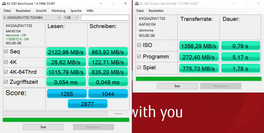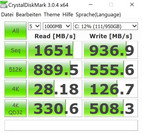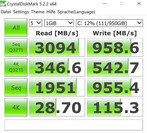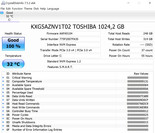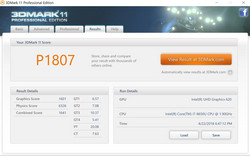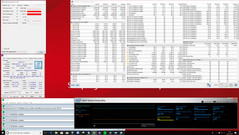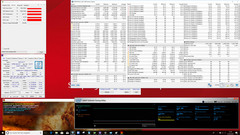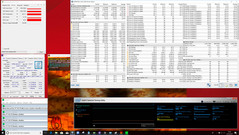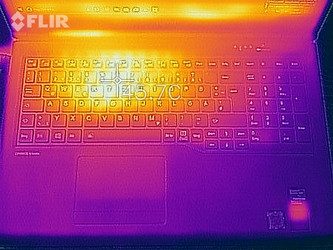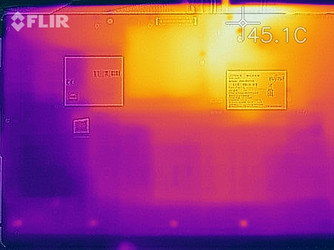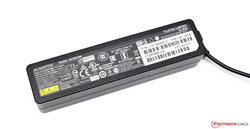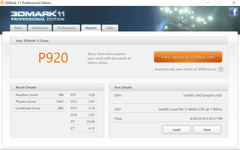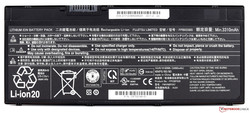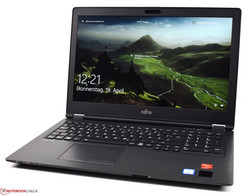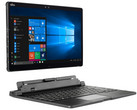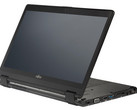Fujitsu LifeBook U758 (i7-8650U, UHD) Laptop Review

As with the recently tested LifeBook U748, Fujitsu has decided to limit its upgrade of the LifeBook 758 to its insides. Our test unit has been given a lot of features and is the highest configuration available. It has an Intel Core i7-8650U paired with 32 GB of DDR4 RAM, and a 1-TB SSD. This is an impressive basis and should offer sufficient performance reserves at all times. On top of that, the device offers a lot of security features and a matte 4K display. Of course, all this comes at a price: The starting price for the lowest configuration is $1200. Please note: The tested configuration does not seem to be available in the US at the time of writing.
The LifeBook U758 does not have it easy as there is a lot of competition that also offers good performance. There is a list of comparison devices we have chosen for this review in the table below. The ThinkPad T580 and HP EliteBook 850 G5 are the most important competitors for the LifeBook U758, but Dell and Schenker also have comparably strong 15-inch devices available.
| Lenovo ThinkPad T580 | HP EliteBook 850 G5 | Dell Latitude 5590 | Schenker Slim 15 | Fujitsu LifeBook U757 | |
| CPU | Intel Core i7-8550U | Intel Core i5-8250U | Intel Core i5-8250U | Intel Core i7-8550U | Intel Core i5-7200U |
| GPU | GeForce MX 150 | Intel UHD Graphics 620 | Intel UHD Graphics 620 | Intel HD Graphics 620 | Intel HD Graphics 620 |
| Display | 15.6 inches 3840x2160 (IPS) | 15.6 inches 1920x1080 (IPS) | 15.6 inches 1920x1080 (IPS) | 15.6 inches 1920x1080 (IPS) | 15.6 inches 1920x1080 (IPS) |
| RAM | 8 GB DDR4 | 8 GB DDR4 | 8 GB DDR4 | 16 GB DDR4 | 8 GB DDR4 |
| Storage | 512-GB SSD | 256-GB SSD | 128-GB SSD | 512-GB SSD | -GB SSD |
| Rating | 89 % | 89 % | 86 % | 83 % | 86 % |
Case
As the two devices have the same build, please see our review of the Fujitsu LifeBook U757 for more information on the case, input devices etc.
Connectivity
| SD Card Reader | |
| average JPG Copy Test (av. of 3 runs) | |
| Dell Latitude 5590 (Toshiba Exceria Pro SDXC 64 GB UHS-II) | |
| Schenker Slim 15 L17 (Toshiba Exceria Pro SDXC 64 GB UHS-II) | |
| Lenovo ThinkPad T580-20LAS01H00 (Toshiba Exceria Pro SDXC 64 GB UHS-II) | |
| Fujitsu LifeBook U758 (Toshiba Exceria Pro SDXC 64 GB UHS-II) | |
| Fujitsu LifeBook U757 (Toshiba Exceria Pro SDXC 64 GB UHS-II) | |
| Average of class Office (22.4 - 198.5, n=28, last 2 years) | |
| maximum AS SSD Seq Read Test (1GB) | |
| Dell Latitude 5590 (Toshiba Exceria Pro SDXC 64 GB UHS-II) | |
| Schenker Slim 15 L17 (Toshiba Exceria Pro SDXC 64 GB UHS-II) | |
| Lenovo ThinkPad T580-20LAS01H00 (Toshiba Exceria Pro SDXC 64 GB UHS-II) | |
| Fujitsu LifeBook U758 (Toshiba Exceria Pro SDXC 64 GB UHS-II) | |
| Fujitsu LifeBook U757 (Toshiba Exceria Pro SDXC 64 GB UHS-II) | |
| Average of class Office (25 - 249, n=26, last 2 years) | |
Display
There are four display options available, one of which is a touch display (FHD). Our Fujitsu test unit is equipped with a 4K display from LG. It has an average display brightness of 304 cd/m² and is not quite as bright as the screens of the EliteBook 850 G5 (383 cd/m²) and the Schenker Slim 15 (336 cd/m²). Due to the good black value (0.24) the LifeBook U758 reaches the best contrast ratio of the comparison at 1300:1. The test unit also offers a good brightness distribution of 93%, but there is still some visible clouding. This did not bother us during everyday use. Another advantage is that the LifeBook U758 manages to regulate screen brightness without the use of PWM.
| |||||||||||||||||||||||||
Brightness Distribution: 93 %
Center on Battery: 315 cd/m²
Contrast: 1300:1 (Black: 0.24 cd/m²)
ΔE ColorChecker Calman: 3.4 | ∀{0.5-29.43 Ø4.78}
calibrated: 2.7
ΔE Greyscale Calman: 4 | ∀{0.09-98 Ø5}
94.1% sRGB (Argyll 1.6.3 3D)
60.9% AdobeRGB 1998 (Argyll 1.6.3 3D)
66.9% AdobeRGB 1998 (Argyll 3D)
94.2% sRGB (Argyll 3D)
65.4% Display P3 (Argyll 3D)
Gamma: 2.25
CCT: 6977 K
| Fujitsu LifeBook U758 LG, LP156UD1-SPB1, 3840x2160, 15.6" | Lenovo ThinkPad T580-20LAS01H00 NV156QUM-N44, 3840x2160, 15.6" | HP EliteBook 850 G5 3JX58EA AUO24ED, 1920x1080, 15.6" | Dell Latitude 5590 NV15N42, 1920x1080, 15.6" | Fujitsu LifeBook U757 LP156WF6-SPP1, 1920x1080, 15.6" | Schenker Slim 15 L17 LG LP156WF6, 1920x1080, 15.6" | |
|---|---|---|---|---|---|---|
| Display | 0% | -4% | -36% | -5% | -8% | |
| Display P3 Coverage (%) | 65.4 | 69.2 6% | 63.4 -3% | 41.56 -36% | 65.8 1% | 63.9 -2% |
| sRGB Coverage (%) | 94.2 | 90.7 -4% | 88.8 -6% | 61.3 -35% | 84.8 -10% | 82.8 -12% |
| AdobeRGB 1998 Coverage (%) | 66.9 | 66.3 -1% | 64.4 -4% | 42.93 -36% | 62 -7% | 60.5 -10% |
| Response Times | -17% | 3% | -38% | 8% | -2% | |
| Response Time Grey 50% / Grey 80% * (ms) | 38.4 ? | 51.2 ? -33% | 42 ? -9% | 53.2 ? -39% | 36 ? 6% | 40 ? -4% |
| Response Time Black / White * (ms) | 29.2 ? | 29.6 ? -1% | 25 ? 14% | 39.6 ? -36% | 26.4 ? 10% | 29.2 ? -0% |
| PWM Frequency (Hz) | 952 ? | 1000 ? | 20660 ? | |||
| Screen | 1% | -23% | -56% | -18% | -14% | |
| Brightness middle (cd/m²) | 312 | 310 -1% | 402 29% | 243 -22% | 313 0% | 333 7% |
| Brightness (cd/m²) | 304 | 283 -7% | 383 26% | 234 -23% | 294 -3% | 336 11% |
| Brightness Distribution (%) | 93 | 87 -6% | 88 -5% | 83 -11% | 84 -10% | 93 0% |
| Black Level * (cd/m²) | 0.24 | 0.24 -0% | 0.41 -71% | 0.19 21% | 0.27 -13% | 0.3 -25% |
| Contrast (:1) | 1300 | 1292 -1% | 980 -25% | 1279 -2% | 1159 -11% | 1110 -15% |
| Colorchecker dE 2000 * | 3.4 | 3.1 9% | 5.25 -54% | 6.6 -94% | 4.5 -32% | 4.7 -38% |
| Colorchecker dE 2000 max. * | 5.6 | 7.6 -36% | 8.65 -54% | 22.3 -298% | 10.5 -88% | 9.7 -73% |
| Colorchecker dE 2000 calibrated * | 2.7 | 2.2 19% | 5.19 -92% | 5 -85% | ||
| Greyscale dE 2000 * | 4 | 2.3 42% | 4 -0% | 5.2 -30% | 4 -0% | 3.5 12% |
| Gamma | 2.25 98% | 2.21 100% | 2.68 82% | 2.24 98% | 2.24 98% | 2.26 97% |
| CCT | 6977 93% | 6876 95% | 6756 96% | 6990 93% | 6387 102% | 6339 103% |
| Color Space (Percent of AdobeRGB 1998) (%) | 60.9 | 59.1 -3% | 58 -5% | 39.2 -36% | 55.3 -9% | 54.2 -11% |
| Color Space (Percent of sRGB) (%) | 94.1 | 90.1 -4% | 89 -5% | 60.8 -35% | 84.74 -10% | 82.7 -12% |
| Total Average (Program / Settings) | -5% /
-1% | -8% /
-17% | -43% /
-50% | -5% /
-12% | -8% /
-11% |
* ... smaller is better
The display quality is good and due to the high contrast ratio, colors do not appear washed out or weak. The color display is good out of the box, with low DeltaE2000 deviations. Calibrating improved these even more. You can download the suitable ICC profile above.
The color space coverage (sRGB: 94.1%, AdobeRGB: 60.9%) is good and more than sufficient for everyday business use. However, professional image processors will not be satisfied with the color space coverage and we can only recommend the display for semi-professional use.
All display variations have an anti-glare surface which minimizes reflections. Nonetheless, the LifeBook U758 has some difficulties when working outdoors, as the screen brightness is too low. Even in the shade, it is hard to read the screen and you will face restrictions when trying to work outside.
Display Response Times
| ↔ Response Time Black to White | ||
|---|---|---|
| 29.2 ms ... rise ↗ and fall ↘ combined | ↗ 18 ms rise | |
| ↘ 11.2 ms fall | ||
| The screen shows relatively slow response rates in our tests and may be too slow for gamers. In comparison, all tested devices range from 0.1 (minimum) to 240 (maximum) ms. » 77 % of all devices are better. This means that the measured response time is worse than the average of all tested devices (20.2 ms). | ||
| ↔ Response Time 50% Grey to 80% Grey | ||
| 38.4 ms ... rise ↗ and fall ↘ combined | ↗ 21.2 ms rise | |
| ↘ 17.2 ms fall | ||
| The screen shows slow response rates in our tests and will be unsatisfactory for gamers. In comparison, all tested devices range from 0.165 (minimum) to 636 (maximum) ms. » 56 % of all devices are better. This means that the measured response time is worse than the average of all tested devices (31.6 ms). | ||
Screen Flickering / PWM (Pulse-Width Modulation)
| Screen flickering / PWM not detected | |||
In comparison: 53 % of all tested devices do not use PWM to dim the display. If PWM was detected, an average of 8111 (minimum: 5 - maximum: 343500) Hz was measured. | |||
Performance
Fujitsu has equipped our test unit with the Intel Core i7-8650U, the strongest model available. Together with the almost oversized working memory (32 GB of DDR4 RAM) and the enormous 1-TB SSD, buyers will get a very well-equipped device. The business companion also features useful security features such as a SmartCard reader and a PalmSecure sensor. We were also happy to see the two maintenance hatches. These will be useful if you choose not to buy the top configuration.
The device is probably too powerful to concern itself only with office applications. But if you regularly work with virtual machines, you will appreciate the 32 GB of RAM and the large SSD.
Processor
The Intel Core i7-8650U is an energy-efficient quad-core SoC that is based on the Kaby Lake architecture. The four processor cores work at 1.9 - 4.2 GHz and have a TDP of 15 watts. Unfortunately, the processor cannot reach its full potential due to the weak cooling system, which leads to the Intel Core i5-8250U being faster than the significantly more expensive i7-8659U. The processor never has more than 25 watts available and therefore cannot compare to the comparison devices, even during short-term load. Our test unit won the comparison with the LifeBook U757, but then the Intel Core i5-7200U is only a dual-core processor.
You can find further benchmarks of the Intel Core i7-8659U here.https://www.notebookcheck.com/Mobile-Prozessoren-Benchmarkliste.1809.0.html
The Cinebench R15 Multi loop is used to find out how the processor works under continuous load. As you can see from the graph below, the Intel Core i7-8650U already drops to 474 points in the second round. After that, its performance settles down for the rest of the test.
Overall, the performance of the Intel Core i7-8650U in the LifeBook U758 lies significantly below our expectations.
| Cinebench R10 | |
| Rendering Multiple CPUs 64Bit | |
| Average of class Office (40726 - 76704, n=7, last 2 years) | |
| Dell Latitude 5590 | |
| Fujitsu LifeBook U758 | |
| Average Intel Core i7-8650U (n=1) | |
| Schenker Slim 15 L17 | |
| Rendering Single CPUs 64Bit | |
| Average of class Office (8648 - 15443, n=7, last 2 years) | |
| Schenker Slim 15 L17 | |
| Dell Latitude 5590 | |
| Fujitsu LifeBook U758 | |
| Average Intel Core i7-8650U (n=1) | |
* ... smaller is better
System Performance
The poor CPU performance also means that the PCMark benchmark produces mixed results. Again, some of our comparison devices are significantly faster and push our test unit to the bottom ranks. In the new PCMark 10, the LifeBook U758 even has to accept last place.
Although the result is clearly not good, this does not mean that it is impossible to work with our test unit.
| PCMark 8 Home Score Accelerated v2 | 3216 points | |
| PCMark 8 Creative Score Accelerated v2 | 4572 points | |
| PCMark 8 Work Score Accelerated v2 | 3926 points | |
| PCMark 10 Score | 2403 points | |
Help | ||
Storage Devices
The storage device that Fujitsu has chosen for our test unit is a model from Toshiba. The 1-TB large SSD occupies the only M.2 2280 slot and transfers data as fast as the wind thanks to its NVMe protocol. We were very impressed by the data transfer rates that we measured and the 4K read speed of 26 MB/s is great.
The LifeBook U758 is also available with M.2 SSDs that "only" run at SATA speeds. These offer additional protection as they support Opal. It is worth looking at the fine print before purchasing your device.
Like its little brother (LifeBook U748) the Fujitsu LifeBook U758 can only be equipped with one storage device. According to the technical specifications, the device supports storage devices of up to 1 TB.
| Fujitsu LifeBook U758 Toshiba KXG5AZNV1T02 | Lenovo ThinkPad T580-20LAS01H00 Samsung SSD PM981 MZVLB512HAJQ | HP EliteBook 850 G5 3JX58EA Toshiba XG5 KXG50ZNV256G | Dell Latitude 5590 SK hynix SC311 M.2 | Fujitsu LifeBook U757 Samsung CM871a MZNTY256HDHP | Schenker Slim 15 L17 Samsung SSD 960 Pro 512 GB m.2 | |
|---|---|---|---|---|---|---|
| CrystalDiskMark 3.0 | 1% | -17% | -41% | -30% | 51% | |
| Read Seq (MB/s) | 1651 | 944 -43% | 2069 25% | 498.8 -70% | 509 -69% | 1958 19% |
| Write Seq (MB/s) | 937 | 924 -1% | 393.4 -58% | 436.4 -53% | 488.4 -48% | 1776 90% |
| Read 512 (MB/s) | 890 | 555 -38% | 914 3% | 352.9 -60% | 414.3 -53% | 819 -8% |
| Write 512 (MB/s) | 556 | 565 2% | 284.9 -49% | 322.8 -42% | 321.7 -42% | 1157 108% |
| Read 4k (MB/s) | 28.18 | 63.9 127% | 31.76 13% | 29.11 3% | 36.43 29% | 54 92% |
| Write 4k (MB/s) | 126.7 | 135.3 7% | 99.2 -22% | 74.5 -41% | 88.4 -30% | 157.7 24% |
| Read 4k QD32 (MB/s) | 330.6 | 336.2 2% | 282 -15% | 276.4 -16% | 402.8 22% | 605 83% |
| Write 4k QD32 (MB/s) | 508 | 264.9 -48% | 338.5 -33% | 267 -47% | 256.7 -49% | 511 1% |
Graphics
The Fujitsu LifeBook U758 does not have a dedicated graphics card. Therefore, the Intel UHD Graphics 620 is responsible for image output. Compared to the Intel HD Graphics 620, this integrated GPU offers an improvement in performance of up to 20%. The LifeBook U758 keeps up with its competition quite well in this respect, although the ThinkPad T580 still has a significant advantage with the GeForce MX150.
You can find further benchmarks of the Intel UHD Graphics 620 here.
| 3DMark 11 Performance | 1861 points | |
| 3DMark Ice Storm Standard Score | 60249 points | |
| 3DMark Cloud Gate Standard Score | 7825 points | |
| 3DMark Fire Strike Score | 1093 points | |
| 3DMark Fire Strike Extreme Score | 519 points | |
| 3DMark Time Spy Score | 393 points | |
Help | ||
Gaming Performance
The missing dedicated graphics card becomes very noticeable in our gaming benchmarks. The performance of the Intel UHD Graphics 620 is not good enough to display demanding games smoothly. As this is clearly a business device, this should not be too much of an issue. If you are looking for a device that you can use for gaming, this is not the one for you.
| low | med. | high | ultra | |
|---|---|---|---|---|
| BioShock Infinite (2013) | 66 | 33.9 | 29.5 | 10.1 |
| Rocket League (2017) | 68.5 | 32.3 | 21 | |
| FIFA 18 (2017) | 62.3 | 33.4 | 28.9 | 26.4 |
Emissions
System Noise
While idling, the LifeBook U758 works mainly silently. We measured a maximum of only 29.3 dB(A) while idling - this is only slightly above the ambient noise (29.3 dB(A)). The LifeBook U758 remains comfortably quiet, even under load and reaches a maximum of 33.1 dB(A). This makes our test unit the quietest device of the comparison. The models from Lenovo, Dell and Schenker are all significantly louder under load.
Noise level
| Idle |
| 29.3 / 29.3 / 29.6 dB(A) |
| Load |
| 31.4 / 33.1 dB(A) |
 | ||
30 dB silent 40 dB(A) audible 50 dB(A) loud |
||
min: | ||
| Fujitsu LifeBook U758 UHD Graphics 620, i7-8650U, Toshiba KXG5AZNV1T02 | Lenovo ThinkPad T580-20LAS01H00 GeForce MX150, i5-8550U, Samsung SSD PM981 MZVLB512HAJQ | HP EliteBook 850 G5 3JX58EA UHD Graphics 620, i5-8250U, Toshiba XG5 KXG50ZNV256G | Dell Latitude 5590 UHD Graphics 620, i5-8250U, SK hynix SC311 M.2 | Fujitsu LifeBook U757 HD Graphics 620, i5-7200U, Samsung CM871a MZNTY256HDHP | Schenker Slim 15 L17 UHD Graphics 620, i5-8550U, Samsung SSD 960 Pro 512 GB m.2 | |
|---|---|---|---|---|---|---|
| Noise | -6% | -4% | -7% | 1% | -6% | |
| off / environment * (dB) | 29.3 | 29.3 -0% | 30 -2% | 29 1% | 28.2 4% | 29.1 1% |
| Idle Minimum * (dB) | 29.3 | 29.3 -0% | 30 -2% | 29 1% | 28.2 4% | 29.1 1% |
| Idle Average * (dB) | 29.3 | 29.3 -0% | 30 -2% | 29 1% | 28.2 4% | 29.1 1% |
| Idle Maximum * (dB) | 29.6 | 31.8 -7% | 32.2 -9% | 31.3 -6% | 28.2 5% | 30.5 -3% |
| Load Average * (dB) | 31.4 | 35.8 -14% | 33.2 -6% | 36.6 -17% | 33.3 -6% | 31.2 1% |
| Load Maximum * (dB) | 33.1 | 38 -15% | 34.2 -3% | 40.9 -24% | 34 -3% | 45.9 -39% |
| Witcher 3 ultra * (dB) | 35.8 |
* ... smaller is better
Temperature
The case temperature reaches a maximum of 43.5 °C (~110.3 °F), which is fine, although the previous model was marginally cooler at 42 °C (~107.6 °F). The components inside paint a different picture: The Intel Core i7-8650U heats up to a maximum of 88 °C (~190.4 °F) during the load test with Prime95. The Power Limit turns on before the CPU needs to be throttled due to high temperatures. This already became evident during the CPU benchmarks, as the manufacturer does not allow a power consumption of more than 25 watts. The eighth generation CPUs can usually manage a maximum of 44 watts, albeit only for a few seconds. Nonetheless, the i7-8650U fails to remain stable at its base clock rate of 1.9 GHz. We measured an average CPU clock rate of 1.8 GHz. When CPU and iGPU work together, the CPU speed drops even lower as both chips have to share a TDP of 15 watts.
The continuous load of the stress test does not have a big impact on 3D performance, which is confirmed by the results of the 3DMark 11 that we ran again after the stress test (result: 1807 points).
(±) The maximum temperature on the upper side is 43.5 °C / 110 F, compared to the average of 34.3 °C / 94 F, ranging from 21.2 to 62.5 °C for the class Office.
(±) The bottom heats up to a maximum of 42.3 °C / 108 F, compared to the average of 36.8 °C / 98 F
(+) In idle usage, the average temperature for the upper side is 23.8 °C / 75 F, compared to the device average of 29.5 °C / 85 F.
(+) The palmrests and touchpad are cooler than skin temperature with a maximum of 26 °C / 78.8 F and are therefore cool to the touch.
(±) The average temperature of the palmrest area of similar devices was 27.6 °C / 81.7 F (+1.6 °C / 2.9 F).
| Fujitsu LifeBook U758 UHD Graphics 620, i7-8650U, Toshiba KXG5AZNV1T02 | Lenovo ThinkPad T580-20LAS01H00 GeForce MX150, i5-8550U, Samsung SSD PM981 MZVLB512HAJQ | HP EliteBook 850 G5 3JX58EA UHD Graphics 620, i5-8250U, Toshiba XG5 KXG50ZNV256G | Dell Latitude 5590 UHD Graphics 620, i5-8250U, SK hynix SC311 M.2 | Fujitsu LifeBook U757 HD Graphics 620, i5-7200U, Samsung CM871a MZNTY256HDHP | Schenker Slim 15 L17 UHD Graphics 620, i5-8550U, Samsung SSD 960 Pro 512 GB m.2 | |
|---|---|---|---|---|---|---|
| Heat | -4% | 6% | 5% | -2% | -0% | |
| Maximum Upper Side * (°C) | 43.5 | 41.7 4% | 37.6 14% | 36.6 16% | 42 3% | 38.5 11% |
| Maximum Bottom * (°C) | 42.3 | 54.6 -29% | 37.8 11% | 47.5 -12% | 38.8 8% | 41.8 1% |
| Idle Upper Side * (°C) | 25.4 | 23.6 7% | 25.3 -0% | 23.2 9% | 29.2 -15% | 26.4 -4% |
| Idle Bottom * (°C) | 25.7 | 25 3% | 25.8 -0% | 24.2 6% | 26.3 -2% | 27.9 -9% |
* ... smaller is better
Speakers
The two speakers are placed above the keyboard and offer a decent performance for an office device. At 74.6 dB(A), they reach a similar volume as the recently tested LifeBook U748 - in both cases the bass frequencies are lacking. The two membranes tend to distort high tones at maximum volume, but the speakers are good enough for video calls and spoken words are rendered clearly.
Fujitsu LifeBook U758 audio analysis
(±) | speaker loudness is average but good (74.6 dB)
Bass 100 - 315 Hz
(-) | nearly no bass - on average 23.3% lower than median
(±) | linearity of bass is average (10.5% delta to prev. frequency)
Mids 400 - 2000 Hz
(+) | balanced mids - only 4.8% away from median
(+) | mids are linear (5.6% delta to prev. frequency)
Highs 2 - 16 kHz
(+) | balanced highs - only 1.8% away from median
(+) | highs are linear (3.4% delta to prev. frequency)
Overall 100 - 16.000 Hz
(±) | linearity of overall sound is average (23.4% difference to median)
Compared to same class
» 65% of all tested devices in this class were better, 8% similar, 27% worse
» The best had a delta of 7%, average was 21%, worst was 53%
Compared to all devices tested
» 69% of all tested devices were better, 6% similar, 25% worse
» The best had a delta of 4%, average was 24%, worst was 134%
Lenovo ThinkPad T580-20LAS01H00 audio analysis
(±) | speaker loudness is average but good (79.9 dB)
Bass 100 - 315 Hz
(-) | nearly no bass - on average 19.7% lower than median
(±) | linearity of bass is average (13.5% delta to prev. frequency)
Mids 400 - 2000 Hz
(+) | balanced mids - only 4.6% away from median
(+) | mids are linear (3.7% delta to prev. frequency)
Highs 2 - 16 kHz
(+) | balanced highs - only 2.2% away from median
(+) | highs are linear (5.6% delta to prev. frequency)
Overall 100 - 16.000 Hz
(±) | linearity of overall sound is average (19% difference to median)
Compared to same class
» 35% of all tested devices in this class were better, 7% similar, 58% worse
» The best had a delta of 7%, average was 21%, worst was 53%
Compared to all devices tested
» 44% of all tested devices were better, 8% similar, 49% worse
» The best had a delta of 4%, average was 24%, worst was 134%
Energy Management
Power Consumption
The LifeBook U758 is not particularly energy-efficient and treats itself to 5.6 - 12.5 watts while idling, which is significantly more than its competition from HP and Dell. But the devices from Lenovo and Schenker do not do a much better job either. The reason for the high consumption while idling is the UHD panel. We measured a surprisingly low average of 34.2 watts under load and the consumption under maximum load is limited to 47.9 watts. This is another clue that suggests that the manufacturer has made changes to the configurable TDP and limited it to 25 watts. The slim power supply is the same as that of the smaller 14-inch device (LifeBook U748) and supplies a maximum of 65 watts.
| Off / Standby | |
| Idle | |
| Load |
|
Key:
min: | |
| Fujitsu LifeBook U758 i7-8650U, UHD Graphics 620, Toshiba KXG5AZNV1T02, IPS, 3840x2160, 15.6" | Lenovo ThinkPad T580-20LAS01H00 i5-8550U, GeForce MX150, Samsung SSD PM981 MZVLB512HAJQ, IPS LED, 3840x2160, 15.6" | HP EliteBook 850 G5 3JX58EA i5-8250U, UHD Graphics 620, Toshiba XG5 KXG50ZNV256G, IPS LED, 1920x1080, 15.6" | Dell Latitude 5590 i5-8250U, UHD Graphics 620, SK hynix SC311 M.2, IPS, 1920x1080, 15.6" | Fujitsu LifeBook U757 i5-7200U, HD Graphics 620, Samsung CM871a MZNTY256HDHP, IPS LED, 1920x1080, 15.6" | Schenker Slim 15 L17 i5-8550U, UHD Graphics 620, Samsung SSD 960 Pro 512 GB m.2, IPS, 1920x1080, 15.6" | |
|---|---|---|---|---|---|---|
| Power Consumption | -20% | 22% | 8% | 28% | -6% | |
| Idle Minimum * (Watt) | 5.6 | 5.3 5% | 2.7 52% | 3.6 36% | 3.96 29% | 7.2 -29% |
| Idle Average * (Watt) | 11.5 | 10.2 11% | 8.1 30% | 6.5 43% | 7.74 33% | 10.9 5% |
| Idle Maximum * (Watt) | 12.5 | 13.6 -9% | 10.1 19% | 7.2 42% | 8.64 31% | 12.6 -1% |
| Load Average * (Watt) | 34.2 | 58.3 -70% | 39 -14% | 46.2 -35% | 28.8 16% | 37 -8% |
| Load Maximum * (Watt) | 47.9 | 65.3 -36% | 37.2 22% | 68.8 -44% | 32 33% | 45.5 5% |
| Witcher 3 ultra * (Watt) | 47.8 |
* ... smaller is better
Battery Runtime
The battery runtimes suffer significantly from the relatively high power consumption while idling. Even without load the lights go out after 9:44 hours. Under maximum load, one full charge of the 50-Wh battery is only enough to power the device for 91 minutes. We measured a runtime of 4:37 hours during our realistic Wi-Fi test. The LifeBook U758 cannot score any additional points here - a business companion should have a minimum battery runtime of 8 hours. The only comfort is the short charging time of two hours.
As with its smaller brother, our device throttles its 3D performance heavily while running on battery. The result of the 3DMark 11 on battery is 920 points - that is significantly worse than on power supply.
| Fujitsu LifeBook U758 i7-8650U, UHD Graphics 620, 50 Wh | Lenovo ThinkPad T580-20LAS01H00 i5-8550U, GeForce MX150, 105 Wh | HP EliteBook 850 G5 3JX58EA i5-8250U, UHD Graphics 620, 56 Wh | Dell Latitude 5590 i5-8250U, UHD Graphics 620, 51 Wh | Fujitsu LifeBook U757 i5-7200U, HD Graphics 620, 50 Wh | Schenker Slim 15 L17 i5-8550U, UHD Graphics 620, 44 Wh | |
|---|---|---|---|---|---|---|
| Battery runtime | 81% | 99% | 37% | 59% | -15% | |
| Reader / Idle (h) | 9.7 | 19.7 103% | 17.8 84% | 17.4 79% | 7.4 -24% | |
| H.264 (h) | 5.9 | 9.4 59% | 10.5 78% | 6.7 14% | 4.3 -27% | |
| WiFi v1.3 (h) | 4.6 | 8.7 89% | 9.3 102% | 7.4 61% | 7.3 59% | 4.6 0% |
| Load (h) | 1.5 | 2.6 73% | 3.5 133% | 1.4 -7% | 1.4 -7% |
Verdict
Pros
Cons
We have now tested both updates of the LifeBook U series from Fujitsu. The LifeBook U748 did a little better than today's test unit, the U758. Its technical specifications look very promising and make the U758 appear to be a very powerful notebook. But what is the use of a strong processor if it cannot reach its full potential? A cheaper model of the Core series might have been a better choice.
The LifeBook U758 did impress us with its good case, which is very user friendly with its maintenance hatches and easy-to-remove battery. We also like the 4K display that offers good image quality and decent color space coverage. Unfortunately, the display could do with more brightness in order to be usable outdoors.
The Fujitsu LifeBook U758 is a good business device that offers many security features and sufficient memory and storage for CPU-intensive applications. VMware and Hyper-V fans will be very happy with the LifeBook U758 in this configuration.
Despite our repeated criticism of the CPU performance, the system performance is good, although some of the comparison devices offer better performance. Fujitsu should also take another look at the touchpad, which was rather disappointing. Devices from Lenovo, Dell and HP also offer a TouchStick as an alternative to the touchpad. The LifeBook does not have this feature.
There are a lot of small things that could have been improved for it to be less like the U748. Due to its size, it would definitely be a good idea to offer an option with a dedicated GPU. As it is, the only real difference between our test unit and the slightly smaller U748 is its size. If you really want the hardware of the U758, you can also get it in the smaller U748.
Fujitsu LifeBook U758
- 05/02/2018 v6 (old)
Sebastian Bade




